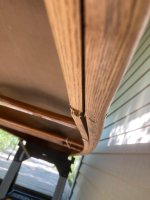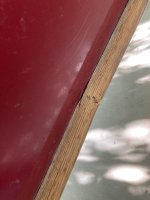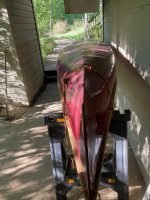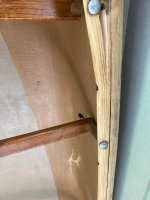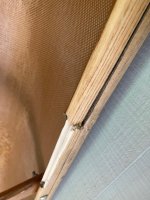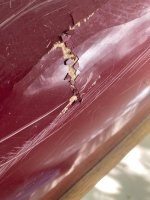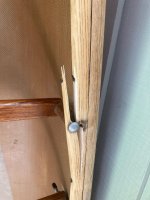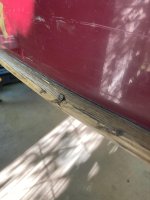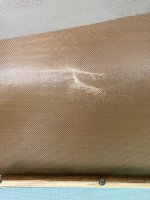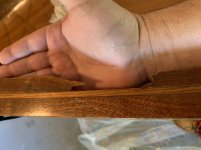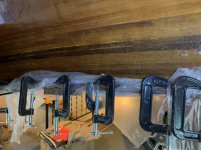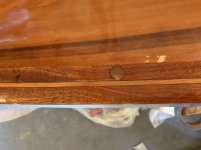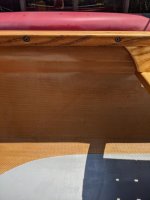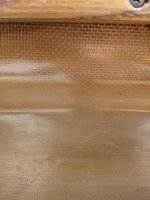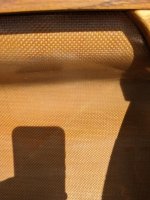We had a stupid accident yesterday- the front tie down rope was not tied and went under the tire of the truck. The wood gunwales on my recently acquired 1988 kevlar Mad River Malecite were damaged in the resulting quasi explosion. The prior owner had oiled them some and there is no rot (we are in a very dry climate in Utah) but the wood is probably drier than optimal. I had sanded and oiled them with Watco right after buying the boat. The damaged wood is splintered and rough- not a clean break or broken all the way through. Has anyone tried infusing gflex into a break like this rather then splicing in a new piece of gunwale? The boat is kind of a rescue project and far from pristine. Functionality is a higher priority the appearance, but I would like to make it look presentable. The PO had removed the center thwart which, based on my research, was under the center seat, and lowered all three seats using drilled dowel hangers. I suspect that the lack of support may have caused the multitude of gel coat cracks in the hull. We added a thwart and raised two of the seats to stiffen it. I really like the way it paddles now, especially solo with the slightly canted seat. It also poles very well. Do I need to try to find some kerfed gunwale splints or is it worth it trying to fix it with glex first? I am a fan of gflex after my son and I were able to “rescue” a 1990 vintage Royalex ME which had about 25 bad cold cracks. It is running fine again.
Thanks for your help.
Thanks for your help.

